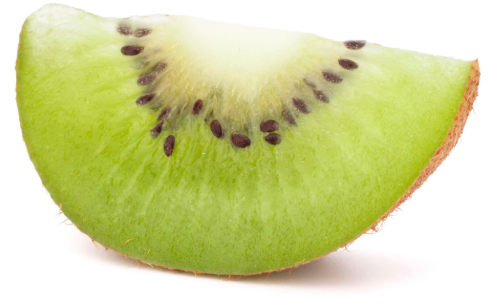kiwi
autor: hatemben ·
Opublikowano: 2025-10-11 17:28:33

Kiwi: The Fruit, The Bird, and The Nickname
The term "kiwi" has three main, distinct meanings, all connected to New Zealand:
1. The Kiwifruit (formerly Chinese Gooseberry)
Description: The kiwifruit is an edible berry of a woody vine belonging to the genus Actinidia. The most common commercial variety (Actinidia deliciosa, cultivar 'Hayward') is oval, about the size of a large hen's egg, with fuzzy, thin brown skin and vibrant green or golden flesh containing tiny black, edible seeds.
Origin and Name: The plant is native to China, where it was known as yang tao (strawberry peach) or Chinese gooseberry. It was brought to New Zealand in the early 20th century. The name was changed to "kiwifruit" (or simply "kiwi") in the 1950s by New Zealand exporters to make it more appealing for American and British markets, naming it after New Zealand's national bird.
Nutrition: Kiwifruit is highly valued for its nutritional density, being rich in vitamins, especially Vitamin C and K, and containing a good amount of dietary fiber and antioxidants.
2. The Kiwi (The Bird)
Description: The kiwi is a flightless, nocturnal bird endemic to New Zealand. It is the smallest of the ratites (a group that includes the Ostrich and Emu). It has vestigial wings, strong legs, and long, hair-like feathers.
Significance: The kiwi bird is a national symbol of New Zealand. It is unique, curious, and holds a special significance for the indigenous Māori people. There are five recognized species, most of which are currently listed as vulnerable or near threatened.
3. The Kiwi (The Nickname)
Usage: "Kiwi" is a common and widely accepted nickname for a person from New Zealand.
Origin: The term originated during World War I, around 1917, when the image of the kiwi bird began to appear on the badges of New Zealand military regiments. The name was a reflection of the bird's distinctiveness and uniqueness to the country. Following WWII, the nickname gradually became attributed to all New Zealanders and is now a common self-reference.
The term "kiwi" has three main, distinct meanings, all connected to New Zealand:
1. The Kiwifruit (formerly Chinese Gooseberry)
Description: The kiwifruit is an edible berry of a woody vine belonging to the genus Actinidia. The most common commercial variety (Actinidia deliciosa, cultivar 'Hayward') is oval, about the size of a large hen's egg, with fuzzy, thin brown skin and vibrant green or golden flesh containing tiny black, edible seeds.
Origin and Name: The plant is native to China, where it was known as yang tao (strawberry peach) or Chinese gooseberry. It was brought to New Zealand in the early 20th century. The name was changed to "kiwifruit" (or simply "kiwi") in the 1950s by New Zealand exporters to make it more appealing for American and British markets, naming it after New Zealand's national bird.
Nutrition: Kiwifruit is highly valued for its nutritional density, being rich in vitamins, especially Vitamin C and K, and containing a good amount of dietary fiber and antioxidants.
2. The Kiwi (The Bird)
Description: The kiwi is a flightless, nocturnal bird endemic to New Zealand. It is the smallest of the ratites (a group that includes the Ostrich and Emu). It has vestigial wings, strong legs, and long, hair-like feathers.
Significance: The kiwi bird is a national symbol of New Zealand. It is unique, curious, and holds a special significance for the indigenous Māori people. There are five recognized species, most of which are currently listed as vulnerable or near threatened.
3. The Kiwi (The Nickname)
Usage: "Kiwi" is a common and widely accepted nickname for a person from New Zealand.
Origin: The term originated during World War I, around 1917, when the image of the kiwi bird began to appear on the badges of New Zealand military regiments. The name was a reflection of the bird's distinctiveness and uniqueness to the country. Following WWII, the nickname gradually became attributed to all New Zealanders and is now a common self-reference.




